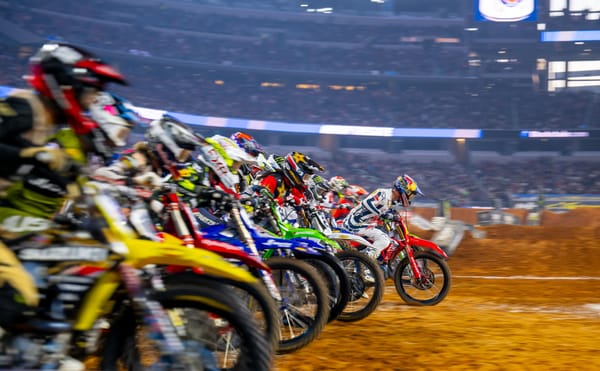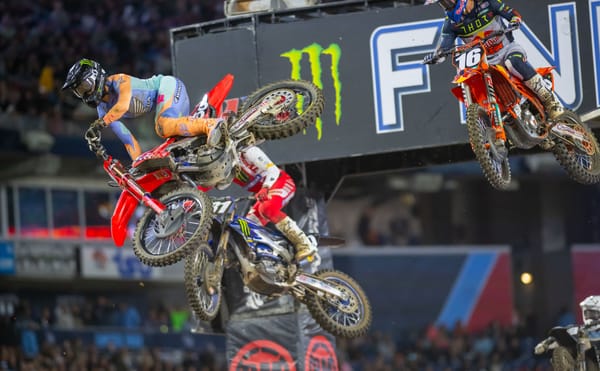The Detroit 250SX Red Flag Was Fair But Not Right
It's time to rethink Supercross restart procedures.
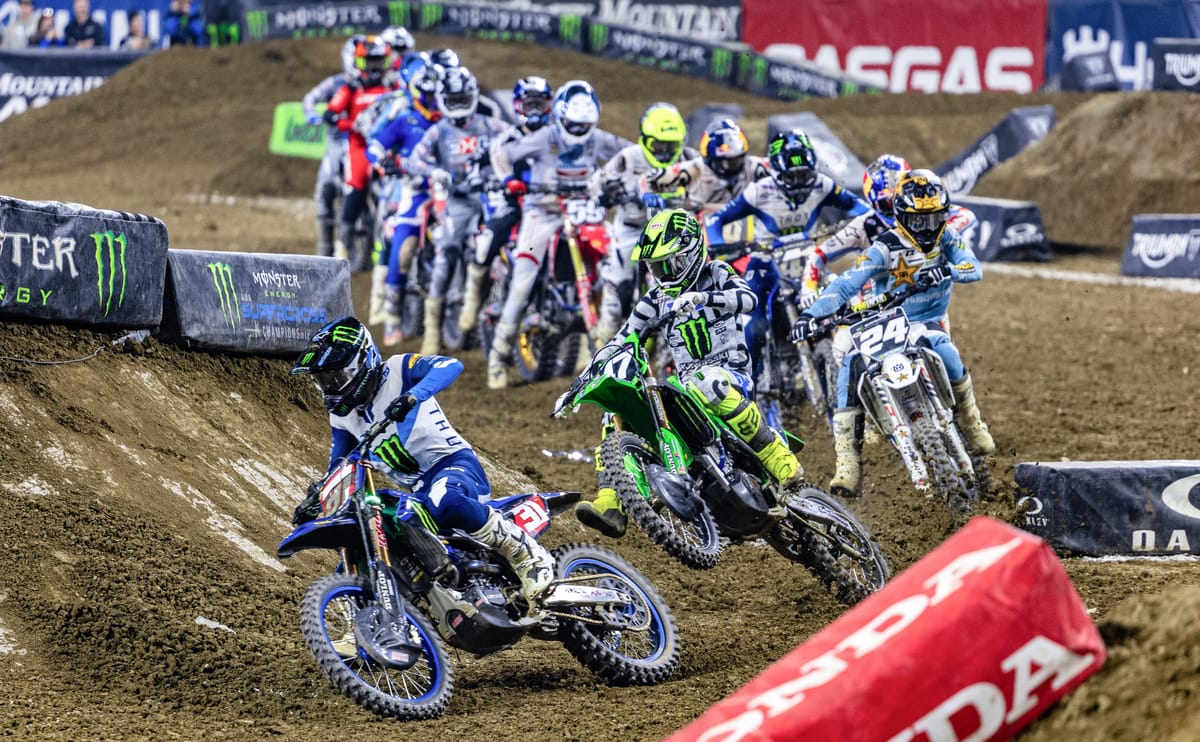
Max Anstie did everything right.
He launched out of the gate, controlled the early laps, built a commanding lead, and proved his victory in the Tampa 250SX East season opener wasn't a fluke.
Things changed in an instant, however, when Cameron McAdoo's violent crash in the whoops prompted the medics to call for the race to stop.
Looking away from the downed rider for a moment, fans, media, and Justin Brayton and Adam Cianciarulo commentating on the race for those in Ford Field — everyone collectively noted the time remaining on the race clock: just seven seconds.
The situation's lack of precedent was realized at that moment. Even in the wake of the event, nobody with a real clue about Monster Energy Supercross has debated whether the red flag should've been called; races must be stopped the instant medical staff calls for it, no exceptions.
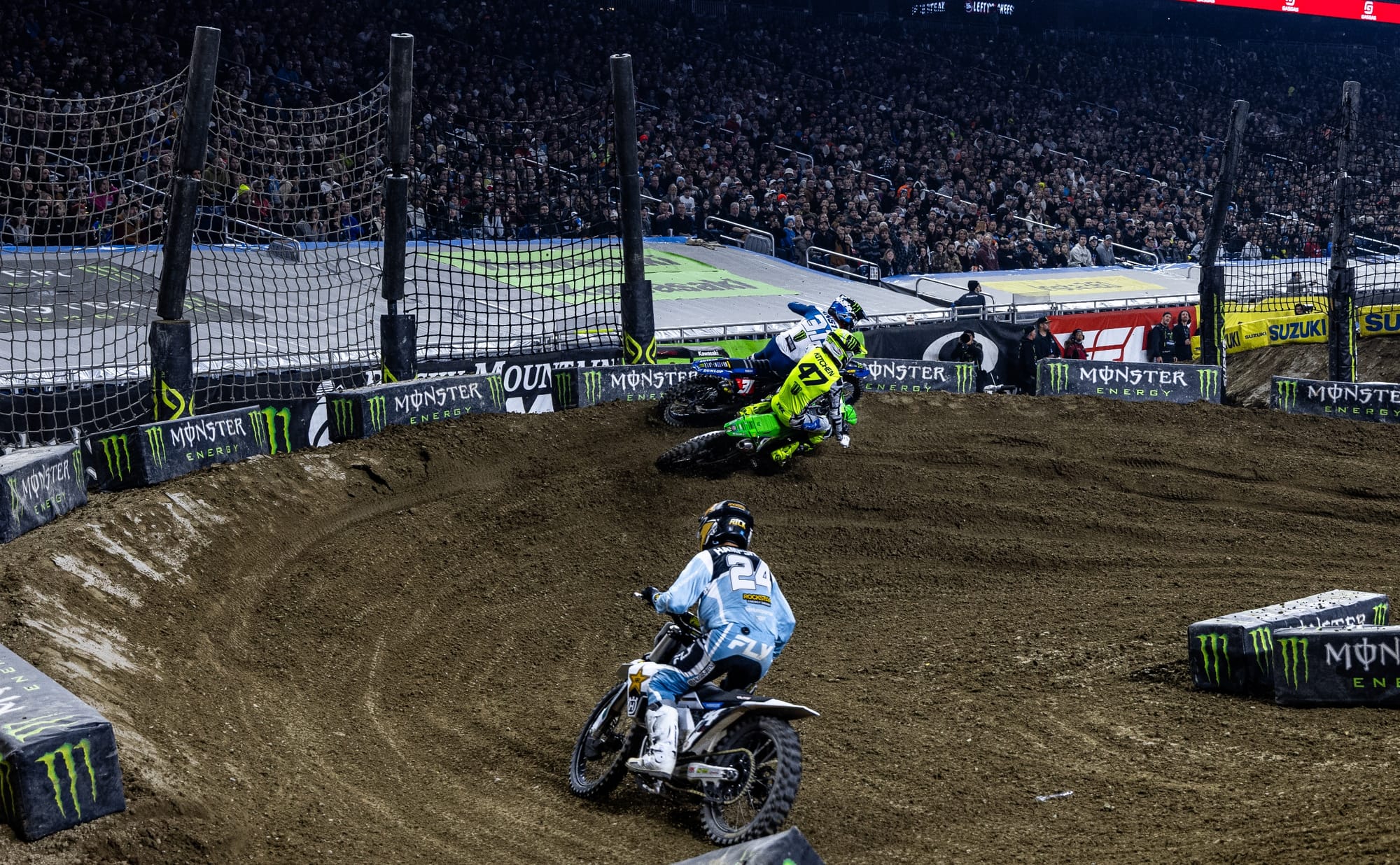
Especially after McAdoo was helped away from the crash scene and signaled positively to the fans, the start straight took center stage. The race would resume following a staggered restart, the third of the young 250SX East season for some of the riders, who experienced one in a heat race and the main event in Tampa a week prior.
The restart erased Anstie's lead and, in a matter of seconds, Levi Kitchen was in prime position to steal the win. By the letter of the rulebook, the AMA handled everything correctly. But that's the problem: this was a fair outcome, but not the right one.
Maintaining Post-Red-Flag Fairness
The Detroit situation that stripped Anstie of a sure win exposed a major flaw in Supercross race procedures: late-race red flags don't just reset the track; they reset the race itself.
A rider who builds a lead should never be at risk of losing everything due to a red flag. The restart should preserve the competitive balance of the race — not turn it into a second-chance lottery for those behind.
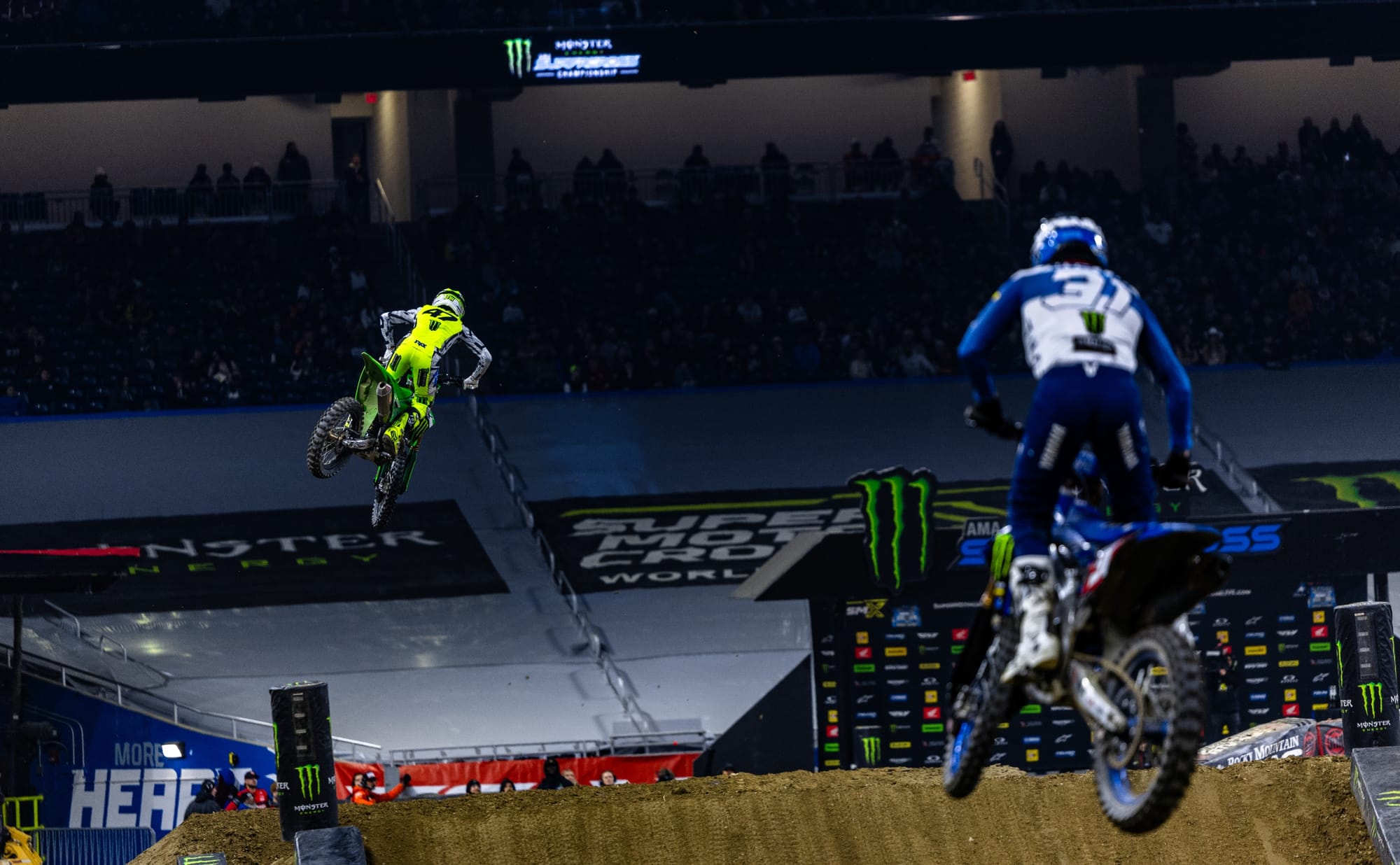
In my opinion, there are three major issues with the current red flag process:
Scoring is based on the last completed lap, not the moment the red flag comes out.
- Any pass made on the lap when the red flag comes out is erased.
- The restart running order should reflect the instant the red flag flew, using the last timing loop each rider crossed. I struggle to believe there isn't a way to achieve this.
The staggered restart eliminates race gaps.
- An eight-second lead should mean something. Right now, it means nothing.
- Instead of resetting the field in a line, the restart should honor the gaps that existed before the red flag.
The leader has no control over the restart.
- Given how the staggered starts work now, second place is on almost equal footing as the leader.
- Instead of defending a multi-second gap, the leader is immediately under attack.
So what's the fix?
Lewis Phillips and Kellen Brauer proposed smart ideas on the PulpMX "LVK" podcast, sparking my thinking on how a better restart process could work. Options include staggered restarts with leader control, a sight/"restart" lap before the green flag, and start-straight lineup releases.
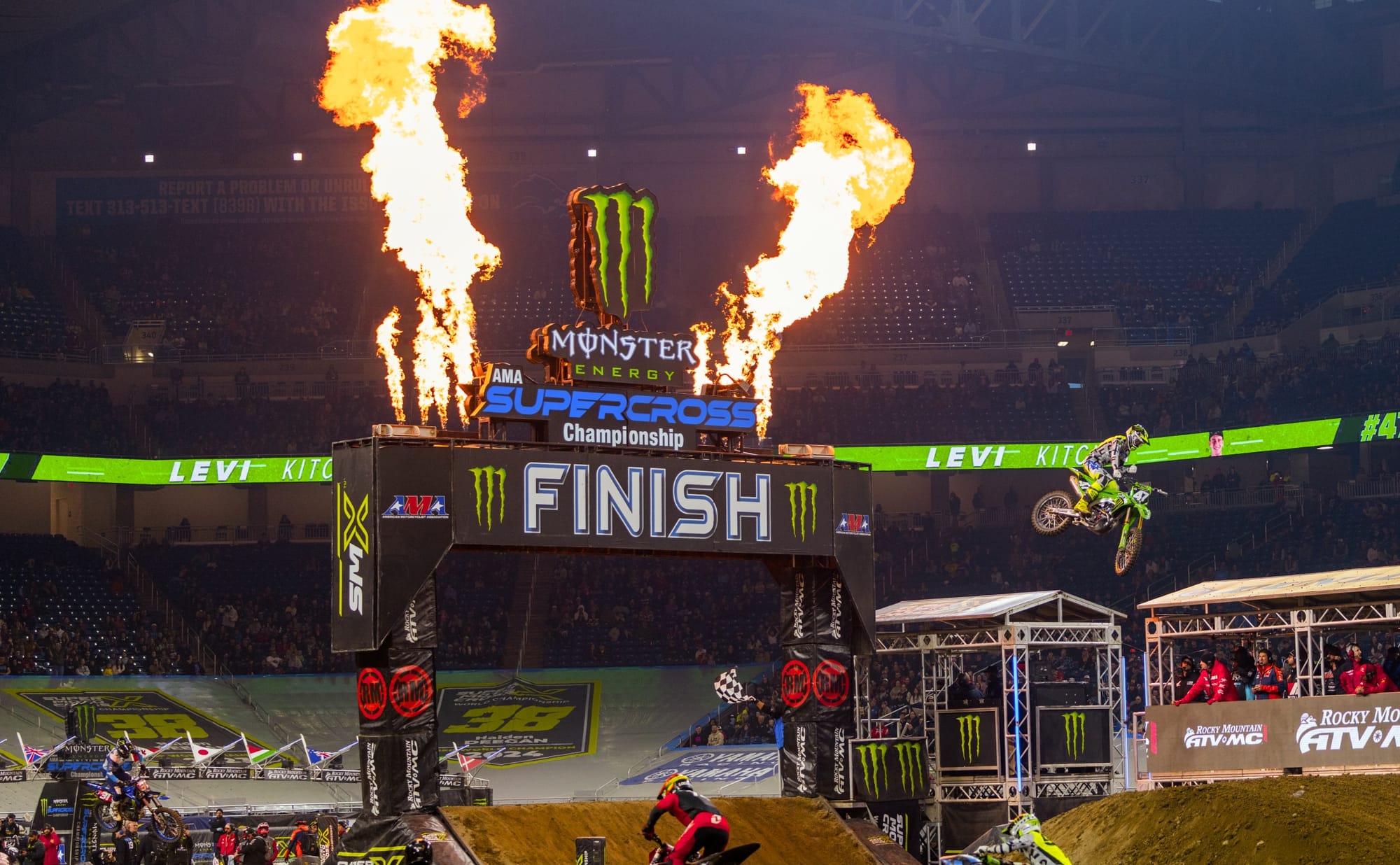
A simple fix is letting the leader dictate when racing resumes from a staggered start. Perhaps the green flag doesn't wave after a countdown — it drops when the leader decides to go.
With that said, the restart lap is the revision I would like to see put in place.
Instead of an instant green flag restart, riders would complete a slow, controlled sight lap, maintaining their positions until they reach the finish line. At that point, they would roll the finish line jump and racing would resume the moment the leader crests the takeoff.
The roost from riders accelerating down the steep takeoff of the finish line would be immense, but that's arguably the most effective defense tactic in the sport — and it's the maintenance of an advantage for riders ahead that we're solving for, right?
It wouldn't be perfect; Detroit proved there will always be edge cases. But it would be a massive step toward fairness.
In an ideal world, the AMA could incorporate restart procedures seen in other racing series, allowing the leader to take off before the finish line at the drop of the green flag. However, that would be difficult to officiate and safely execute — especially on layouts like Detroit's. A risky triple was immediately followed by a sand section, a sharp double, and a short run to the finish line. Releasing the field at full speed in that scenario might equal asking for another red flag.
Supercross riders deserve a red flag procedure that protects their hard work. The fair-but-flawed conclusion to Detroit's 250SX East main should be the spark for change.

